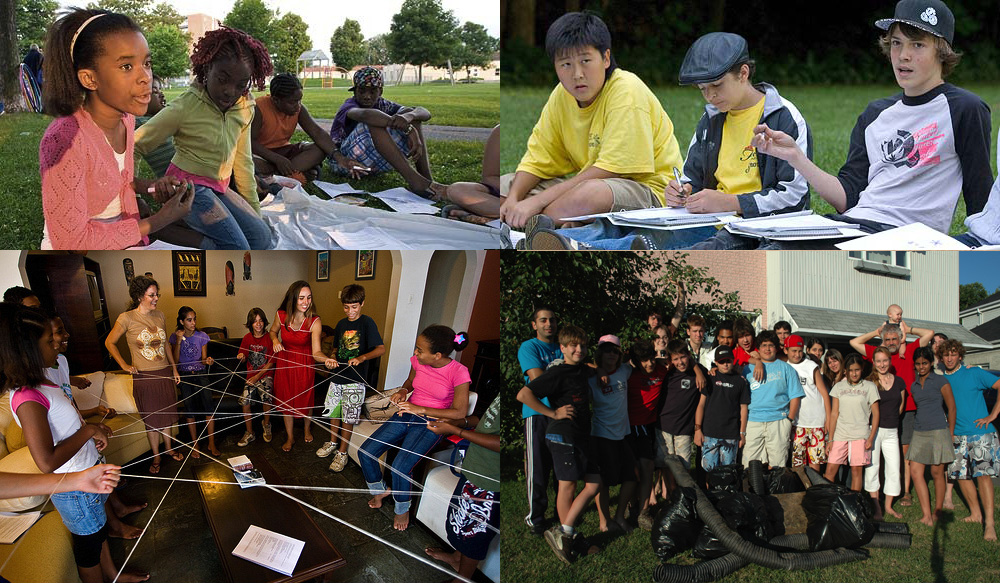The Bahá’í Training Institute’s program for junior youth (aged 11 to 15) gathers young people of diverse backgrounds forming small groups of five to twenty participants where they can support each other in the development of their talents and qualities, while finding ways in which they can make a positive difference in their environment. The participants in the program come together once or twice a week to study and discuss different themes, and also to plan and carry out service projects. Artistic, social and sports activities complement the program.

The development of intellectual and moral capacities
The program is mainly based on a series of books developed by various organizations throughout the world. Animators trained for this purpose accompany participants in the study of these books with the purpose of strengthening the development of diverse moral and intellectual capacities. Some of the books are concerned with developing language skills and the power of expression. Certain ones also address mathematical concepts and social issues, while others seek to prepare young people to approach the investigation of physical, social and spiritual reality in a scientific manner. Though the moral concepts in the materials are drawn from the Bahá’í teachings, they are not religious in nature, nor do they treat subjects that are specifically Bahá’í. The short stories they contain bring out essential moral concepts and promote the development of attitudes that may lead to a given decision instead of another. They are intended to guide the participants during a crucial period of their life in which they are preparing to become young adults.
Service to the community
Another highly important element of the program is service to the community. The animators regularly assist the participants in analyzing the needs of their community and in consultation, to plan, carry out and evaluate service projects which will help meet these needs. The youth are encouraged to prioritize activities that matter the most for their community, for example cleaning the neighborhood, maintaining a community garden, organizing an artistic evening, visiting a residence for the elderly, shoveling snow or helping a children’s class teacher. The service projects vary from one group to the other and from one community to the other since they are suggested by the participants and depend on their interests.